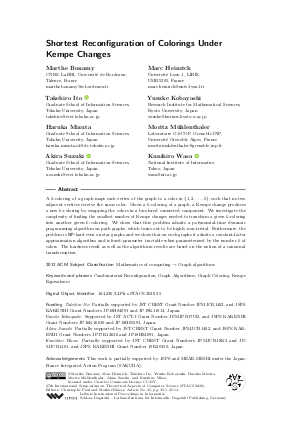LIPIcs.STACS.2020.35.pdf
- Filesize: 0.68 MB
- 14 pages

 Creative Commons Attribution 3.0 Unported license
Creative Commons Attribution 3.0 Unported license



















Feedback for Dagstuhl Publishing